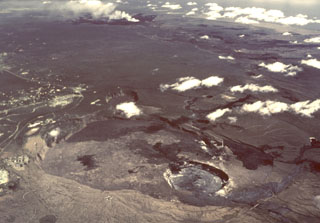Report on Kilauea (United States) — 13 October-19 October 2021
Smithsonian Institution / US Geological Survey
Weekly Volcanic Activity Report, 13 October-19 October 2021
Managing Editor: Sally Sennert.
Please cite this report as:
Global Volcanism Program, 2021. Report on Kilauea (United States) (Sennert, S, ed.). Weekly Volcanic Activity Report, 13 October-19 October 2021. Smithsonian Institution and US Geological Survey.
Kilauea
United States
19.421°N, 155.287°W; summit elev. 1222 m
All times are local (unless otherwise noted)
HVO reported that the summit eruption at Kilauea continued in Halema`uma`u Crater during 12-19 October. A 10-m-wide, horseshoe-shaped spatter rampart had formed around the W vent and was open to the E where lava was feeding the lake. For about 10 hours on 12 October a new vent N of the W vent produced 10-15-m-high lava fountains. Lava fountains from the W vent rose as high as 20 m and fed the lava lake which was 46 m deep by 18 October. The lava lake was not level with the deepest parts measured around the W vent; the W end was 4-5 m higher than the N and S parts of the lake and 12 m higher than the E end. Cooled and crusted parts of the lake’s surface overturned, or “foundered,” in all parts of the lake except the E part. The sulfur dioxide emission rate was high at 1,600-6,800 tonnes per day during 12-14 and 16-17 October. The Aviation Color Code and the Volcano Alert Level remained at Orange and Watch, respectively.
Geological Summary. Kilauea overlaps the E flank of the massive Mauna Loa shield volcano in the island of Hawaii. Eruptions are prominent in Polynesian legends; written documentation since 1820 records frequent summit and flank lava flow eruptions interspersed with periods of long-term lava lake activity at Halemaumau crater in the summit caldera until 1924. The 3 x 5 km caldera was formed in several stages about 1,500 years ago and during the 18th century; eruptions have also originated from the lengthy East and Southwest rift zones, which extend to the ocean in both directions. About 90% of the surface of the basaltic shield volcano is formed of lava flows less than about 1,100 years old; 70% of the surface is younger than 600 years. The long-term eruption from the East rift zone between 1983 and 2018 produced lava flows covering more than 100 km2, destroyed hundreds of houses, and added new coastline.
Source: US Geological Survey Hawaiian Volcano Observatory (HVO)

